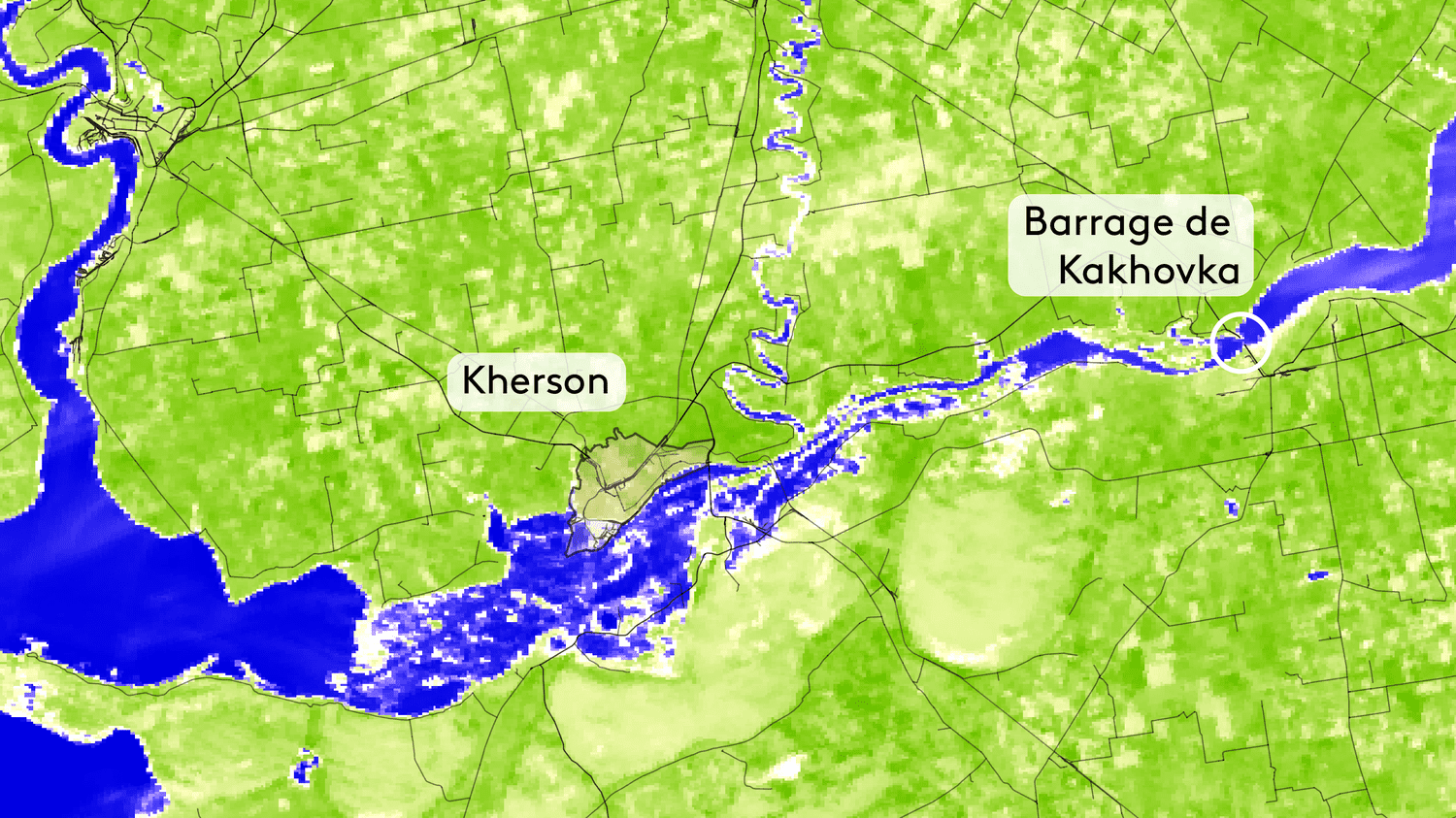New satellite images make it possible to clearly visualize the evolution of the floods in the Kherson region since the disaster at the Kakhovka dam on the night of Monday to Tuesday.
It is a catastrophic incident, the consequences of which are still uncertain. During the night of Monday June 5 to Tuesday June 6, the destruction of the Kakhovka dam, north of Kherson, led to the gradual flooding of the entire area downstream. kyiv accuses Russia of blowing up the building, while Moscow denounces Ukrainian sabotage. In the meantime, entire neighborhoods are swallowed up.
>> War in Ukraine: the destruction of the Kakhovka dam feeds multiple hypotheses
On the 50 kilometers that separate what remains of the Black Sea dam, the banks of the Dnipro have seen the water level rise inexorably, causing the evacuation of thousands of inhabitants. Thursday 8 in the morning, about 600 km2 of land was under water. Both on the western bank, held by the Ukrainians, and on the opposite bank, occupied by the Russian army.
The phenomenon is such that it is visible from space. New satellite images make it possible to visualize the extent of the floods in the area which extends from the remains of the dam to the Black Sea. Thanks to the Sentinel-3 satellites, operated by the European Space Agency, which capture daily images, and via the analysis of the presence of water from Copernicus data, it is possible to visualize the evolution of the masses of water. As shown in the image below, between June 5 and June 9, a large area around the river is flooded. The water even goes up the wire of the Inhoulets, a river going up towards the north.
The northern shore of the Zaporizhia Reservoir is drying up
Upstream too, the effects of the incident are visible from space. The reservoir of the Kakhovka dam is slowly emptying, and the water reservoir, which usually runs over an area of 1,850 km2, sees its level drop by between 4 and 7 cm per hour. The shores located further north are gradually becoming bare, as shown in the satellite images below.

Many eyes are on the Zaporijjia nuclear power plant, located on the eastern shore of the reservoir. While concerns had emerged about the possibility of maintaining cooling of the reactors, the dam disaster should not have technical consequences for the nuclear installation.
Methodology
These satellite images come from the Sentinel Hub site, operated by the European Space Agency and the Copernicus program. By retrieving data from Sentinel-3 satellites, it is possible to perform calculations to analyze the presence of water. The indicator then used is called the “Normalized Difference Water Index” (NDWI), which notably uses infrared measurements.
